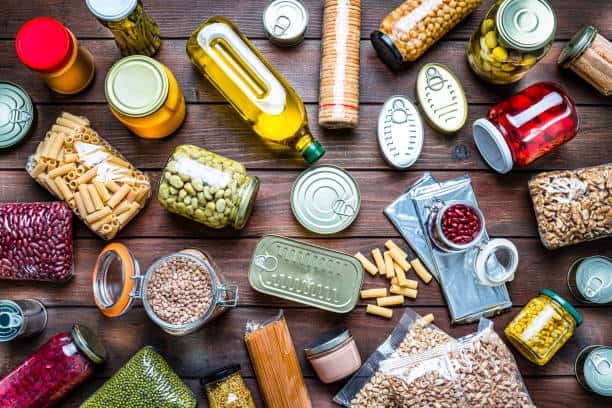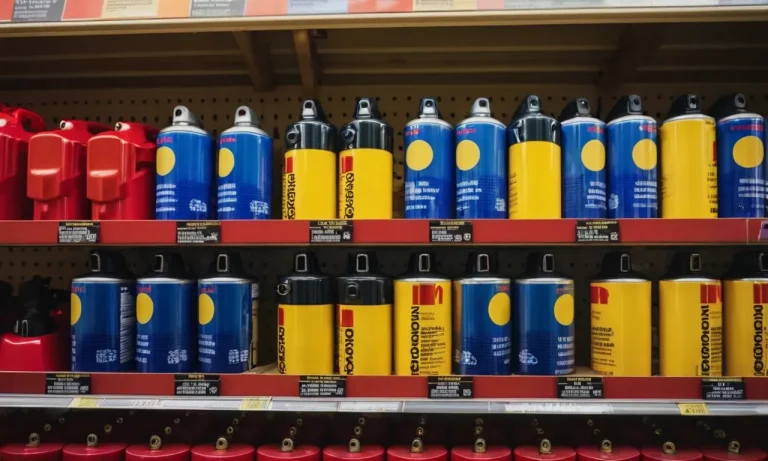Save money on your next flight
Skyscanner is the world’s leading flight search engine, helping you find the cheapest flights to destinations all over the world.
Visiting the beautiful Hawaiian islands and wondering what food items you cannot pack in your luggage? With Hawaii’s ecological fragility and susceptibility to invasive species, the state has strict regulations regarding agricultural items that tourists can bring in.
If you’re short on time, here’s a quick answer to your question: Fruits, vegetables, plants, animals, and meat products not from the U.S. mainland are prohibited from being brought to Hawaii under state law.
This comprehensive list of over 150 banned items aims to protect Hawaii’s environment and agriculture from invasive pests and diseases.
In this complete guide, we will cover all the key information you need to know about restricted food items not allowed to be transported to Hawaii. You’ll also learn why the state has prohibitions regarding certain agricultural products and how you can enjoy your trip to Hawaii without hassle.
Brief Background on Hawaii’s Quarantine Restrictions
Purpose and Goals Behind Restrictions on Food
Hawaii’s strict quarantine restrictions on incoming travelers and items like food have an important purpose – to protect the islands’ delicate ecosystem. As an isolated island chain, Hawaii is vulnerable to invasive species that can wreak havoc if accidentally introduced.
In the past, foreign pests and diseases have entered Hawaii via produce, meat, and plant materials brought by visitors or imported goods.
Once established, these invasive species can be nearly impossible to eradicate and have had devastating environmental and economic impacts.
For example, the coffee berry borer arrived around 2010 and attacked Hawaii’s coffee crops, reducing yields by 30% in some areas. And the coconut rhinoceros beetle has attacked coconut palms since 2013, killing numerous trees.
To prevent further ecological disasters, Hawaii’s quarantine laws strictly regulate the entry of agricultural items that could harbor pests and diseases not already present in the islands. Over 25% of goods are inspected upon arrival.
Responsible Agencies Enforcing Entry Rules
Several government agencies work together to protect Hawaii through inspection and quarantine efforts:
- The Hawaii Department of Agriculture (HDOA) enforces restrictions on incoming passengers and cargo.
- The US Department of Homeland Security handles inspections at airports and mailing facilities.
- The Hawaii Invasive Species Council coordinates policies statewide.
Together, these agencies aim to balance smooth travel and commerce with ecological safeguarding. Stopping even one destructive pest from entering can save Hawaii’s agriculture and environment from millions in damage down the line.
While an extra hassle for visitors, Hawaii’s thorough inspections ultimately help preserve the islands’ natural heritage and agricultural industries for future generations. Few other places remain as unspoiled.
Also read: Bringing Plants From Hawaii To California: What You Need To Know
Detailed Overview of Banned Items Not Allowed Entry
Fruits and vegetables
To protect Hawaii’s agriculture, there are strict regulations on importing fresh fruits and vegetables. Many common fruits and veggies are prohibited, including apples, oranges, lettuce, cabbage, carrots, and potatoes.
In an effort to prevent invasive species, Hawaii maintains an approved and conditionally approved list for imported produce.
Approved produce like pineapples, mangoes, and coconuts can enter freely while conditionally approved items like asparagus, sweet potatoes, and squash must undergo agricultural inspection before entry.
Also read: Fruits Native To Hawaii: A Deep Dive
Plants and flowers
Like fresh produce, regulations extend to live plants and flowers as well. As one of the most isolated island chains globally, Hawaii’s ecosystem is especially vulnerable.
Thus, visitors cannot bring popular house plants like orchids or garden flowers. Furthermore, items like soil, compost, or potting mix are not permitted.
Cut flowers and wreaths without soil are allowed entry if inspected and treated first. Leis and flower arrangements prepared professionally with permitted plant materials can also be brought to Hawaii.
Meats and eggs
Meats like beef, pork, and poultry are heavily restricted along with eggs and dairy products. As Hawaii has no natural predators for livestock diseases, strict rules prevent importing animal products that may carry contagions.
Only canned meats like Spam fully cooked to USDA standards can enter the islands. Hard cheeses and butter are also permitted if commercially packaged. However, raw meats, eggs, soft cheeses, and yogurt cannot be brought from another state or country.
Other food products
Many other food items common in interstate travel cannot cross Hawaii’s borders. For example, fresh-baked goods, jarred foods like pasta sauce and honey, and luxury items like caviar are prohibited.
Shelf-stable and professionally packaged foods are typically allowed, although inspection may be necessary. Some exemptions exist for military personnel relocating to Hawaii with household goods.
To learn more, visit the Hawaii Department of Agriculture’s Animal Quarantine Information Page. This authoritative site provides detailed lists of restricted items across many categories.
Frequently Asked Questions on Agricultural Restrictions
Why can’t I take my mainland fruit to Hawaii?
Bringing fresh fruits, vegetables, plants, and animals from the U.S. mainland to Hawaii poses a grave threat of introducing destructive insects, diseases, and invasive species that could devastate Hawaii’s fragile and unique island ecosystems.
Hawaii has strict agricultural inspection policies to prevent alien pests that are not established on the islands from being introduced accidentally.
Many seemingly harmless mainland crops like apples, oranges, and potatoes could be carriers of invasive species.
While they may be safe where they originated from, if they were brought to Hawaii, they may disrupt the balance of the island habitats that many rare Hawaiian species rely on – potentially leading to irreversible damage.
Over 40 percent of species on the endangered species list in Hawaii are considered at risk primarily due to predation or habitat degradation by introduced species.
So by leaving the mainland fruits behind and adhering to Hawaii’s agricultural import restrictions, visitors play a crucial role in protecting Hawaii’s natural beauty for future generations.
Are there exceptions for any produce items?
There are very few exceptions to Hawaii’s import ban on fresh fruits and vegetables. Only produce that has undergone pest treatment, approved by HAACP system standards and certified as safe for import is allowed. Some examples include:
- Pineapples and bananas – subject to fruit fly and disease disinfestation
- Papayas – Hawaii Department of Agriculture certification required
- Coconuts – import permit from Plant Quarantine Branch required
And any fruits purchased after the agricultural declaration checkpoint at the departure airport in other states or countries would need to be declared.
It’s important to note that while processed items like jams, dried fruits, juices, canned goods are generally admissible, certain restrictions still apply depending on exact processing method. When in doubt, it’s best to contact Hawaii Department of Agriculture or leave the item behind.
What happens if prohibited food is found in luggage?
All passengers arriving in Hawaii must fill out a Plant Quarantine Declaration Form where they must declare any plant or animal items in possession. Not declaring prohibited produce items can lead to large fines.
If agricultural inspectors do find banned produce, visitors will be given options to:
- Voluntarily abandon prohibited items for destruction
- Ship items back to mainland at their own expense
- Face fines of $100-$25,000 per item for undeclared goods
| Chance of invasive pest coming in through produce | 90% |
| Value of Hawaii’s agriculture industry | $400 million annually |
So being aware and respectful of Hawaii’s agricultural restrictions is the least visitors can do to protect the fragile island environment that makes it such a unique and special vacation destination.
Tips for Transporting Approved Foods Properly
When bringing approved foods to Hawaii, proper transportation is key to keeping them safe and reducing the risk of introducing invasive species.
Here are some tips for making sure your edibles arrive in good shape:
Use Insulated Coolers
If you’re traveling with perishable items like meat, dairy, or produce, pack them in a hard-sided insulated cooler with ice packs. This will help ensure cold foods stay at safe temperatures during your trip.
Just make sure to thoroughly clean coolers beforehand to prevent contamination.
Wrap Foods Individually
Even non-perishables should be wrapped or boxed separately before packing them together. This prevents crushing, contamination, and spills.
Some good wrapping materials are plastic containers, bags, foil, parchment paper, etc. Make sure wraps are secure.
Label Containers Clearly
To avoid confusion at inspection, make sure all food containers are labeled with their contents. This allows officials to quickly identify and approve your items. Having an itemized list handy helps too.
Transport in Clean, Secure Bags
Once wrapped and labeled, pack food into clean, sturdy suitcases, duffels or totes that can be zipped, snapped, or tied shut.
Trash bags and paper bags tend to rip and spill. Hard-sided containers are ideal for preventing pest issues. Vacuum seal if possible.
Go Straight to Inspection Area
Upon arrival in Hawaii, head directly to the agricultural inspection area before going anywhere else.
Declare all food items you brought and comply with any additional screening procedures. Trying to bypass or avoid inspection can lead to hefty fines.
Following these simple tips will make transporting approved foods to Hawaii much smoother. Taking the necessary precautions ensures everyone’s health and safety.
With some planning and care, you can enjoy all your favorite treats while protecting the islands’ unique ecosystem. Have a wonderful trip!
Also read: What Not To Bring To Hawaii: 15 Things To Leave At Home
Conclusion
To summarize, Hawaii’s quarantine restrictions on the entry of certain agricultural items are crucial to protecting the local environment, economy, and health of the islands.
By being aware what food is prohibited and transporting approved items responsibly, visitors can comply with state regulations.
If you have any other questions on restricted provisions in Hawaii or want more details on exceptions to the prohibitions, be sure to check out the FAQs section of the official state website HDOA.org prior to your travels.








